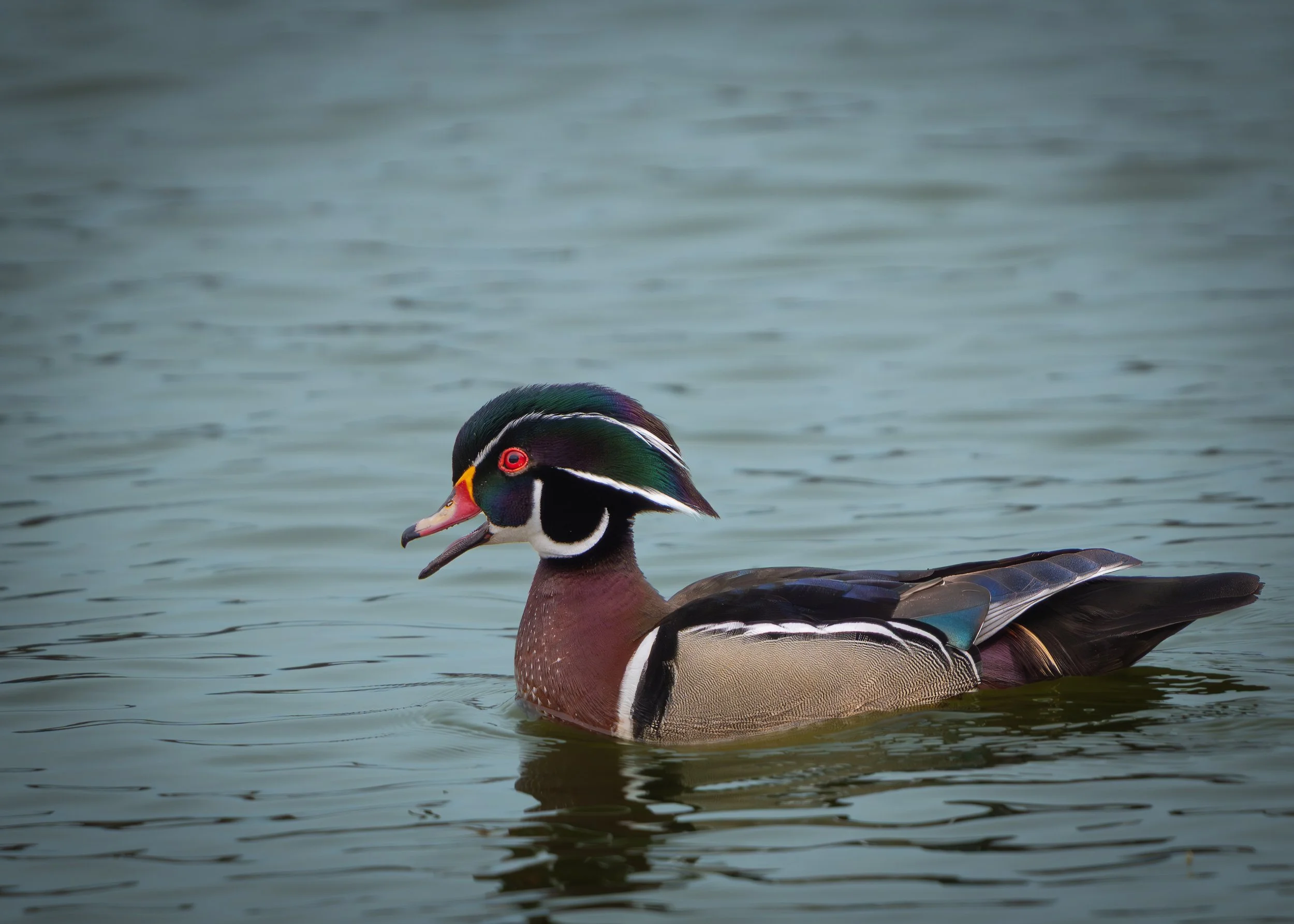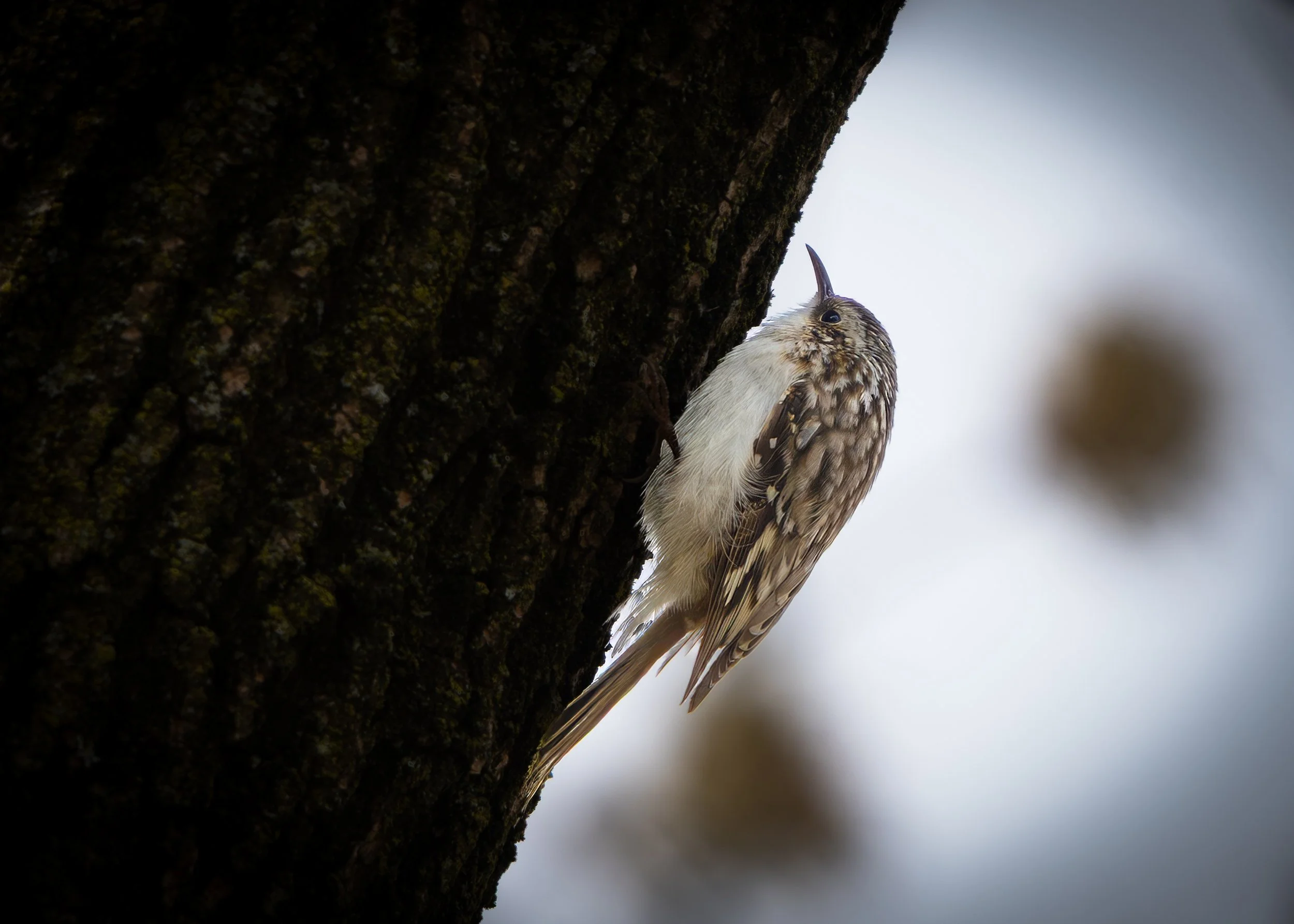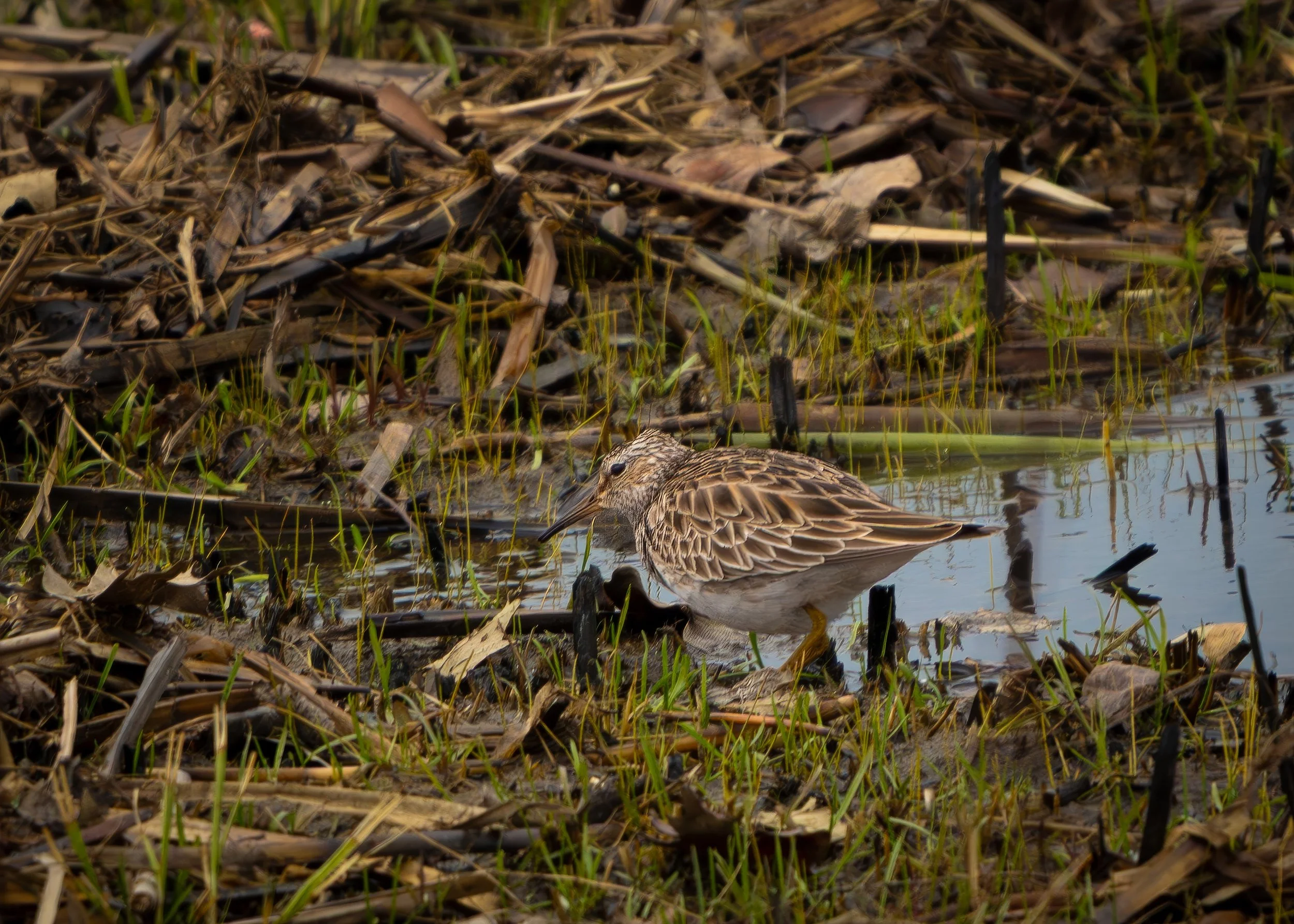Field Trip Recap: Humboldt Park Social Walk
By Kris Hansen
At the leisurely hour of 10 AM on April 13, a dozen people gathered at the boat house at Humboldt Park for birds and conversation. BirdCast showed large numbers of birds migrating the night before, so the odds were high that we’d see many species, said COS board member and trip co-leader Chris Holden. In fact, each person predicted the number of species we would see as they introduced themselves, with most guesses in the 30s.
Wood Duck. Photo by Madhu Nukathoti, Humboldt Park, April 13, 2025.
We started with many Wood Ducks in the lagoon, along with Mallards, Canada Geese, Tree Sparrows and distant Turkey Vultures. As we moved to the east, we found both Ruby-crowned and Golden-crowned Kinglets, Song and Swamp Sparrows, and assertive male Red-Winged Blackbirds, flaring their epaulets and brrrrring at us.
Moments later we discovered one, then two, then a veritable bumper crop of Fox Sparrows. These handsome sparrows are known for their double-leg back kicks, popping slightly into the air and using their legs and claws to thrust leaves and topsoil behind them to uncover tasty bugs. A lone White-Throated Sparrow joined them, also demonstrating the kick.
Brown Creeper. Photo by Madhu Nukathoti, Humboldt Park, April 13, 2025.
As we moved north, we found a cooperative Brown Creeper and a Yellow-bellied Sapsucker—two trip participants remarked that this bird was a running gag in the TV series “The Honeymooners.” Several Hermit Thrushes and a number of American Robins tagged along as we circled the island. An American Kestrel, Eastern Phoebe, and Ring-billed Gulls gave brief looks overhead. Common Grackles bathed in the water.
From the far side of the lagoon we headed west, spotting a lone American Tree Sparrow, and crossed the road to the baseball field. Three Northern Flickers worked the grounds along with a large group of European Starlings and more grackles.
Pectoral Sandpiper. Photo by Madhu Nukathoti, Humboldt Park, April 13, 2025.
Passing the field house, we arrived at the pair of small ponds. The northwest pond once was obscured by brush, Holden said, but a controlled burn opened it up, making it easier to spot shorebirds. Indeed, we quickly found a Greater Yellowlegs that showed its size by standing near a Pectoral Sandpiper. Mysteriously, the Killdeer that frequent the ponds did not appear.
As we passed the Lief Erickson statue and headed back to the boathouse, we saw our final bird species of the day, a Great Blue Heron. Altogether we saw 32 species, just under the prediction of trip co-leader Chris Cochrane.




